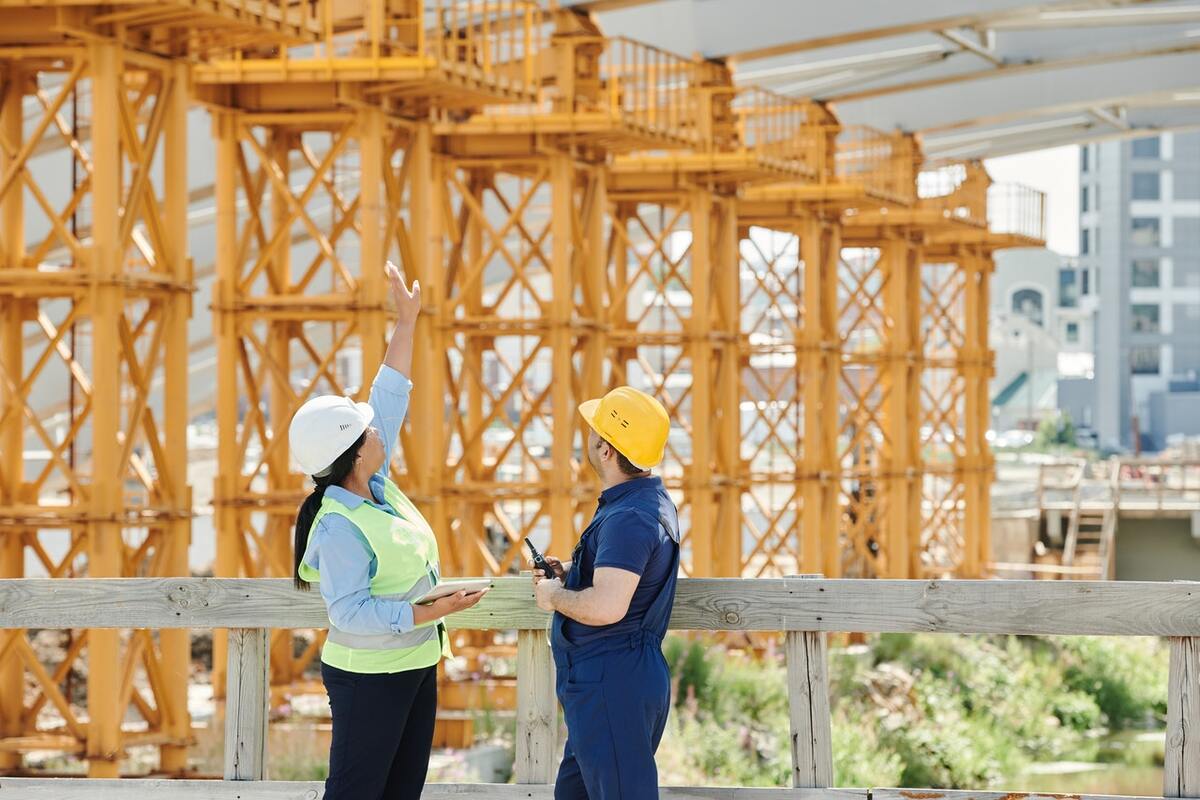The Biggest Opportunities for Sustainable Construction in 2022

As eco-consumer rates increase globally, industries search for pollution reduction methods. The United Nations Paris Agreement supports the shift towards sustainable development. It established a goal of reducing society's greenhouse gas emissions and preserving the planet.
Post-industrial countries are also creating independent regulations, improving conservation efforts. Many target the construction industry because of its high atmospheric and surface-level pollution production. Researchers predict five opportunities in 2022 will increase the sustainability of development.
Environmental Challenges in the Construction Industry
Before evaluating the opportunities, individuals must assess the ecological limitations of current construction practices. Project sites produce significant quantities of air, water, and noise pollution. Globally, the construction industry accounts for nearly 38% of greenhouse gas emissions.
Heavy machinery, vehicles, and low-efficiency systems and material production contribute to air pollution. When greenhouse gases reach the atmosphere, they alter its composition. Earth relies on specific atmospheric elements to produce and regulate surface temperatures.
Society must maintain the atmosphere’s composition to support the global ecosystem. Naturally, the planet produces heat from sunlight, warming its surface. After Earth reaches a specific temperature, the atmosphere collects excess energy and sends it to space.
When emissions invade the atmosphere, they increase its light-to-heat exchange rate. They also trap extra energy in the environment, filtering it back through the heat production process. Over time, greenhouse gases raise the planet's temperature, creating adverse environmental effects.
New sustainable construction opportunities will decrease industrial emissions, reducing the enhanced greenhouse effect. They may also improve employment opportunities, rebuilding the workforce following the pandemic-related recession. The five demands below will help global society achieve the Paris Agreement's goal of preserving the greater ecosystem.
1. Meeting Energy-Efficient Technology Demands
One way in which countries in the Paris Agreement support each other is through technological advancements. Today, environmental engineers and scientists are developing various efficiency-enhancing devices, decreasing building emissions. Residential and commercial demands for smaller carbon footprints and utility bills increase opportunities for installation projects.
Smart thermostats, shades, lights, and other appliances effectively reduce a building's emissions. They also improve localized air quality, reducing a community's risk of lung cancer, asthma, and additional respiratory illnesses. Cities are also evolving using green technology to improve environmental conditions.
2. Creating Smart Cities
Smart cities use the internet of things (IoT) and efficiency-enhancing devices to minimize atmospheric and surface-level pollution. As global emission regulations advance, the demand for smart cities rises.
Construction professionals and firms may respond to these needs by gaining Leadership in Energy and Environmental Design (LEED) certifications and sourcing sustainable materials. Smart city infrastructure also involves replacing lighting systems with motion-sensor-enhanced systems to save energy. Soon, driverless cars and smart city infrastructure will work together to eliminate traffic jams, too. This will further drive down emissions and pollution.
3. Expanding Modular Construction
Since the pandemic, the need for e-commerce has also increased. Individuals are practicing social distancing and accessing medical supplies during quarantines to improve community health conditions. As e-commerce demands expand, construction professionals must build more warehouses.
Professionals can build warehouses while minimizing emissions using efficiency-enhancing designs like modular construction. Modular construction means building sections are assembled off-site to reduce waste. Once each portion is complete, workers transport the elements and place them together, creating an airtight seal.
The construction design is significantly more sustainable compared to onsite building practices. It also increases the recyclability of materials and minimizes error-produced waste. More residents and business owners are requesting modular development, improving their sustainability levels and reducing energy costs.
4. Working on Residential Projects
Another factor influencing sustainable construction in 2022 is pandemic-delayed projects. Residents postponed renovations and other building plans to increase workers' safety. As construction professionals established safety regulations, the demand for project acceleration rose.
Residents also have a higher demand for sustainable construction. They hope to shrink their personal footprints from home, increasing the energy efficiency of devices and systems.
5. Supporting Sustainable Material Needs
Another sustainable demand from residents and business owners is eco-friendly building materials. Various construction components, like volatile organic compound (VOC) paints, can leak into the environment and cause adverse effects to topsoil and natural water supplies. The need to minimize surface-level pollution increases construction workers’ sustainable construction projects.
Professionals can utilize non-VOC paints, recycled wood, and emission-free materials to support rising sustainability demands. Accessing eco-friendly construction parts can improve one's competitive stability in the industry.
Accessing Sustainable Building Opportunities
Construction professionals can remain competitive in the industry by receiving sustainable building certifications. Accessing LEED, Energy Star, and Green Globes labels may increase one's success in their field. Resident and commercial customers search for accredited professionals to effectively reduce environmental pollution and work towards the Paris Agreement’s goals in 2022.
As eco-consumer rates increase globally, industries search for pollution reduction methods. The United Nations Paris Agreement supports the shift towards sustainable development. It established a goal of reducing society's greenhouse gas emissions and preserving the planet.
Post-industrial countries are also creating independent regulations, improving conservation efforts. Many target the construction industry because of its high atmospheric and surface-level pollution production. Researchers predict five opportunities in 2022 will increase the sustainability of development.



